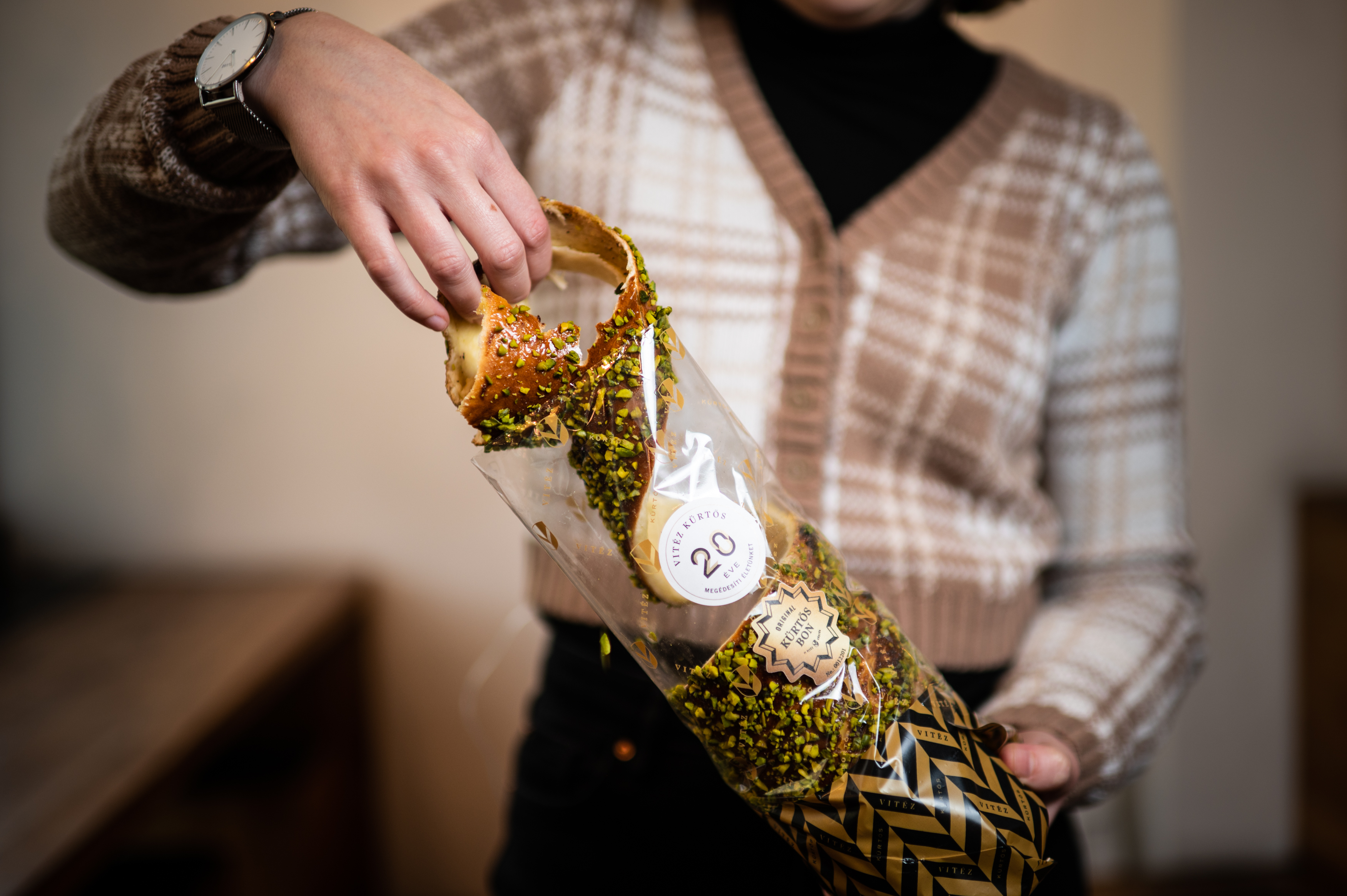Chimney cake (kürtőskalács)
Watching the sweet, vanilla-scented spun and wrapped-up cakes being made is like some secret story was playing out. The sugar gets caramelised on the white dough, which turns into a shiny, glistening brown chimney cake, reminding Hungarians of beach trips, craft fairs and festivals.
It is simply a must-try on any trip to Budapest. You can easily get your hands on one in an underground metro station, but if you listen to us, you hop on the metro and head to the City Park. Here, next to the Széchenyi Baths and the Holnemvolt Castle, you will find Édes Mackó, a chimney cake heaven where you can sit down comfortably to enjoy your sweet treat.
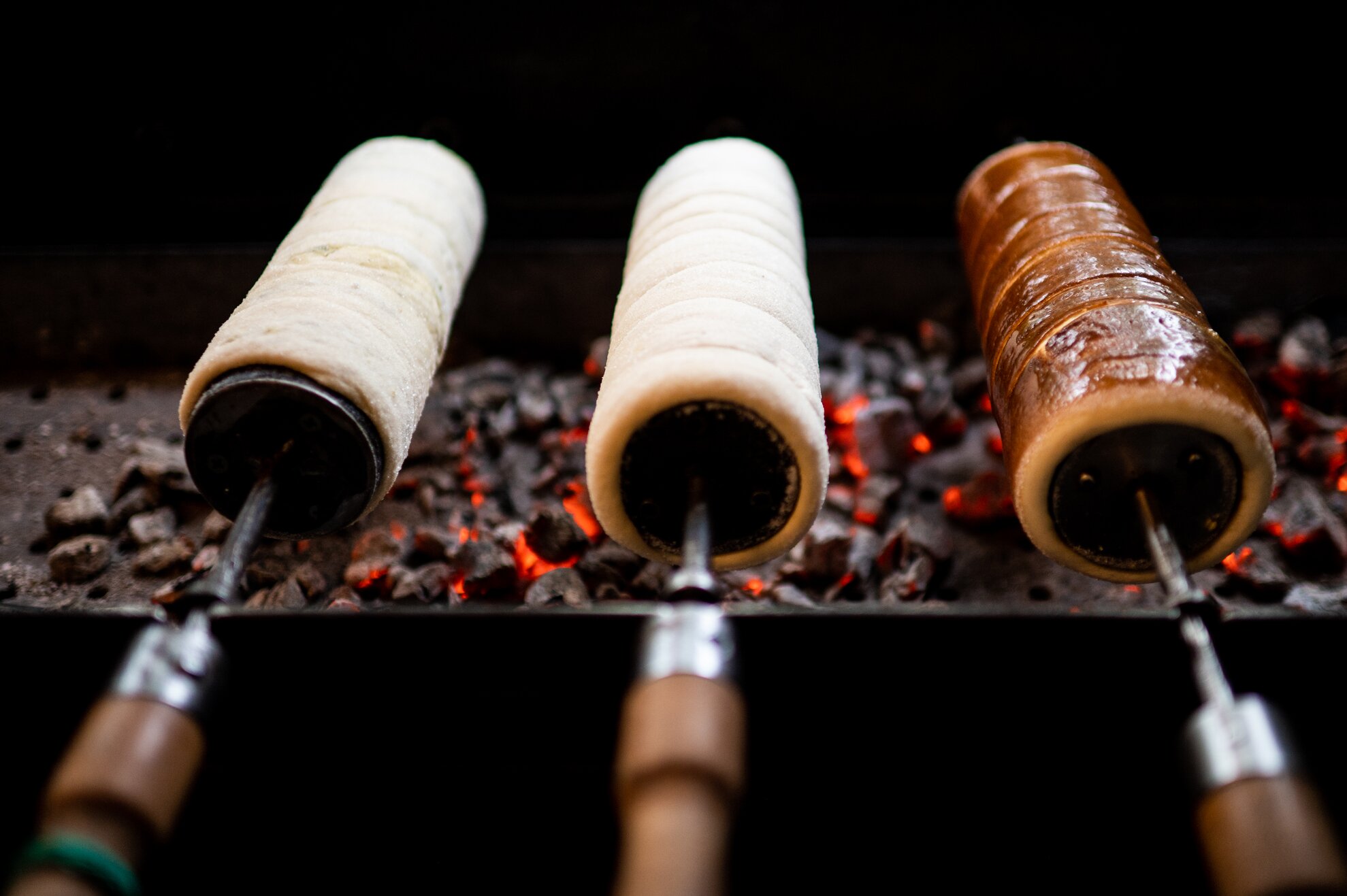
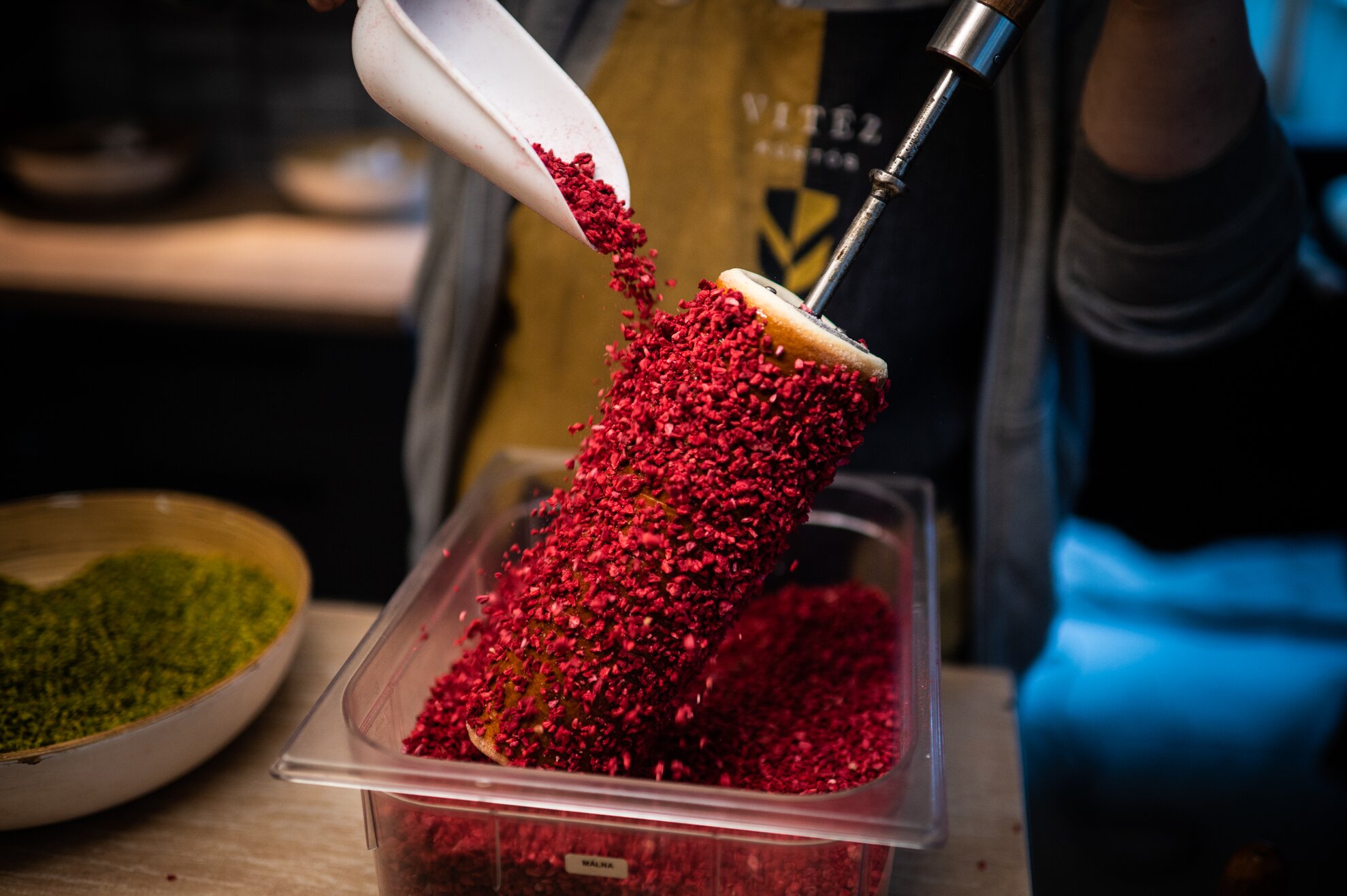
Édes Mackó Kürtőskalács Pastry Shop
At Édes Mackó, kürtőskalács is made all year around. They are baked on charcoal and spun by hand – something you unlikely see in the city centre. If the classic flavours and shape were too basic, go for the colourful sugar, confetti, and chocolate-sprinkled specialities without a second thought!
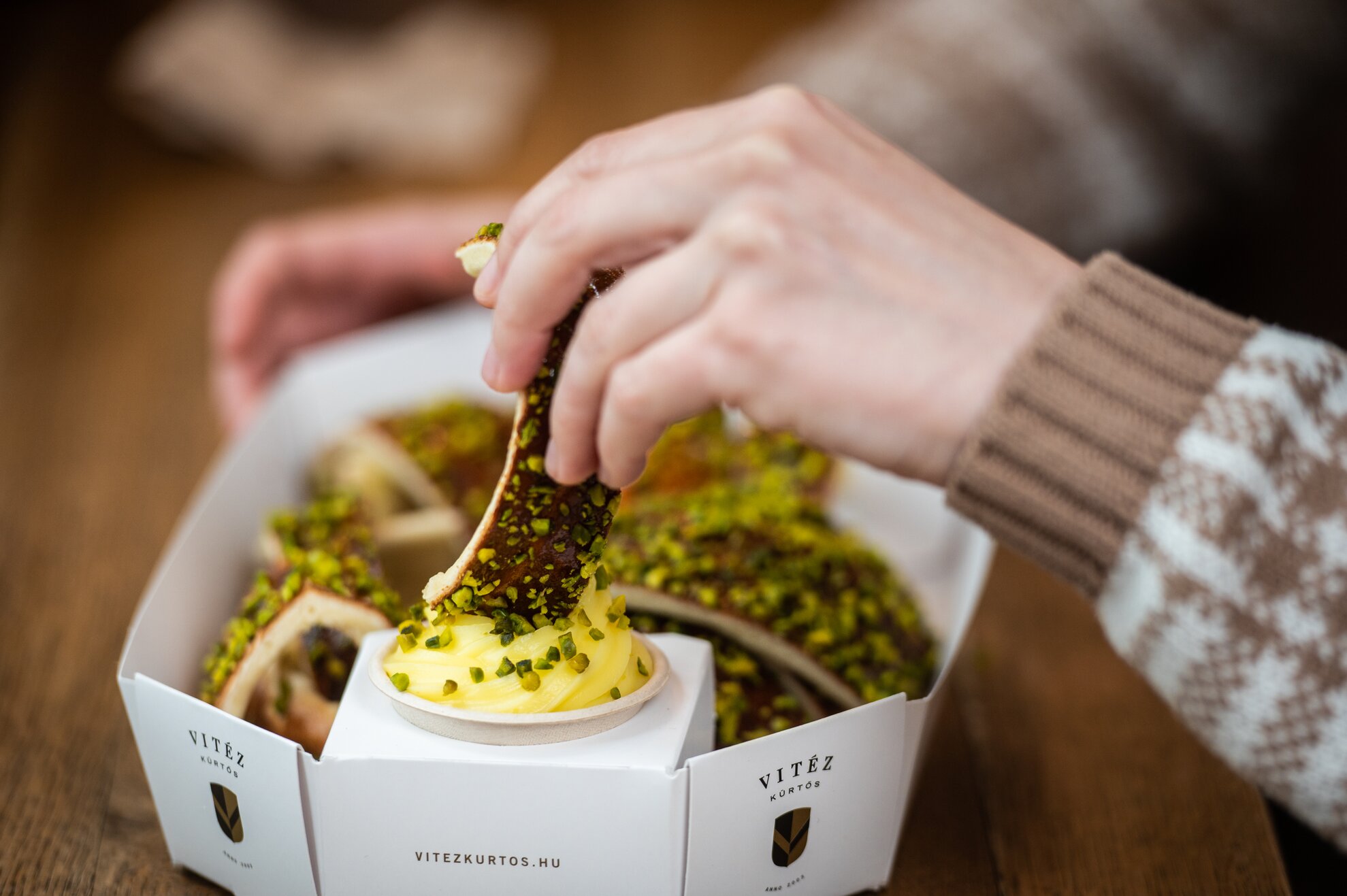
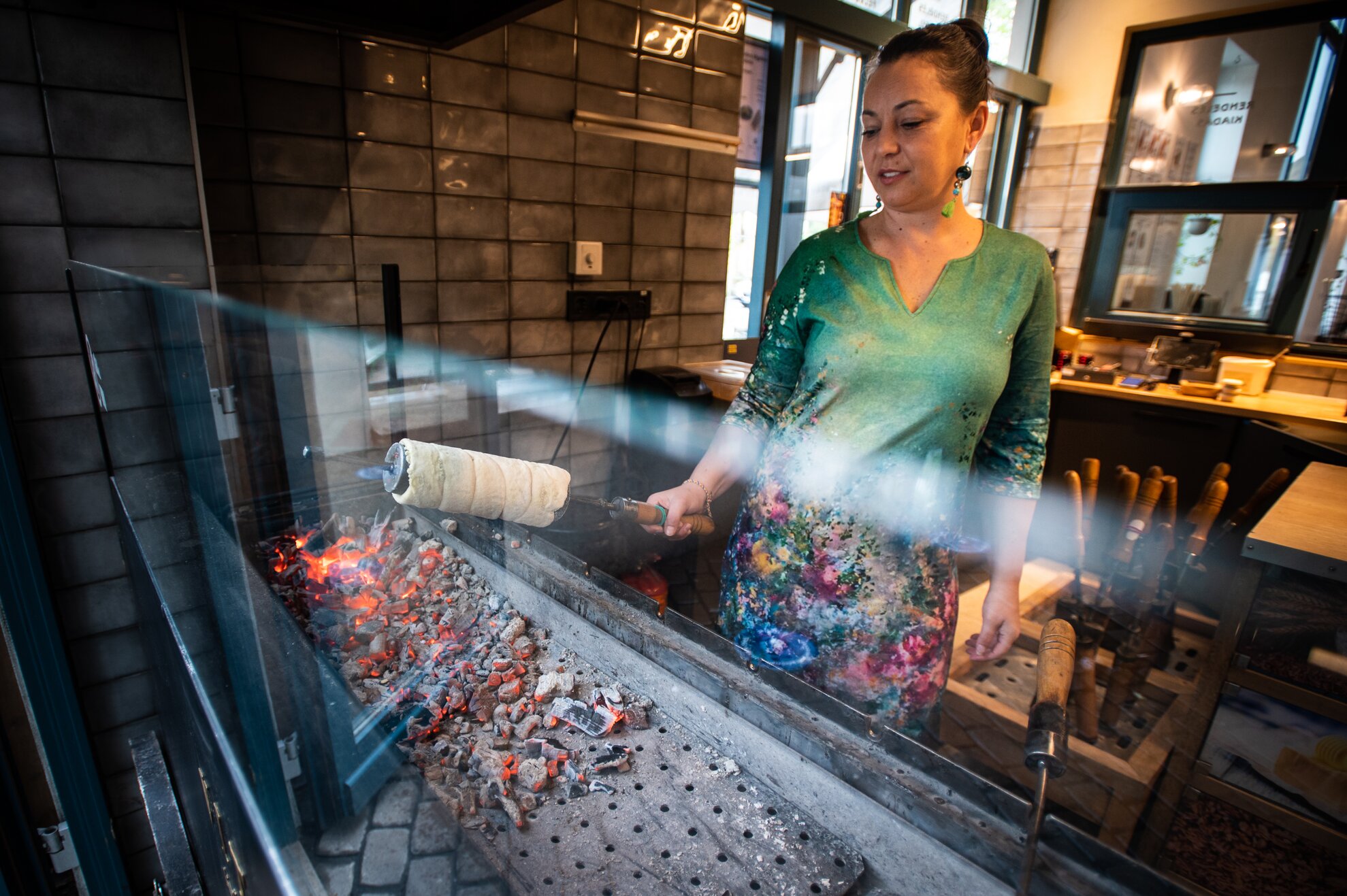
Family recipe
The story of Édes Mackó begins somewhere back when one of the owners, Gáspár Bálint’s grandmother, used to make and sell chimney cakes on the beach in the summer. Fast forward: Gáspár and Tünde András inherited the traditional recipe and created Vitéz Kürtős in Budapest, which quickly became a favourite among the people of Budapest. But for a long time, it could only be found at festivals, the Zoo, and various events.
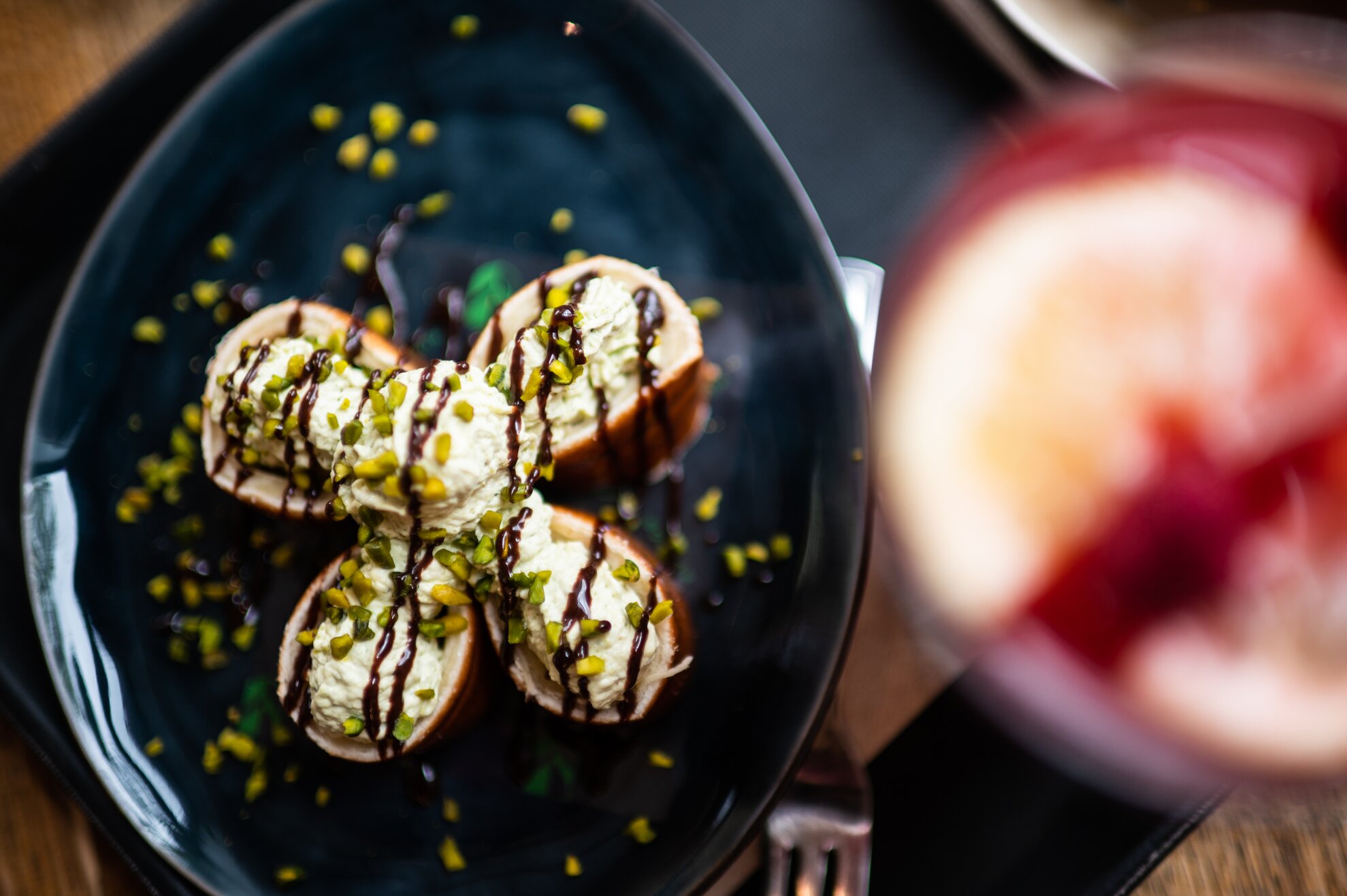
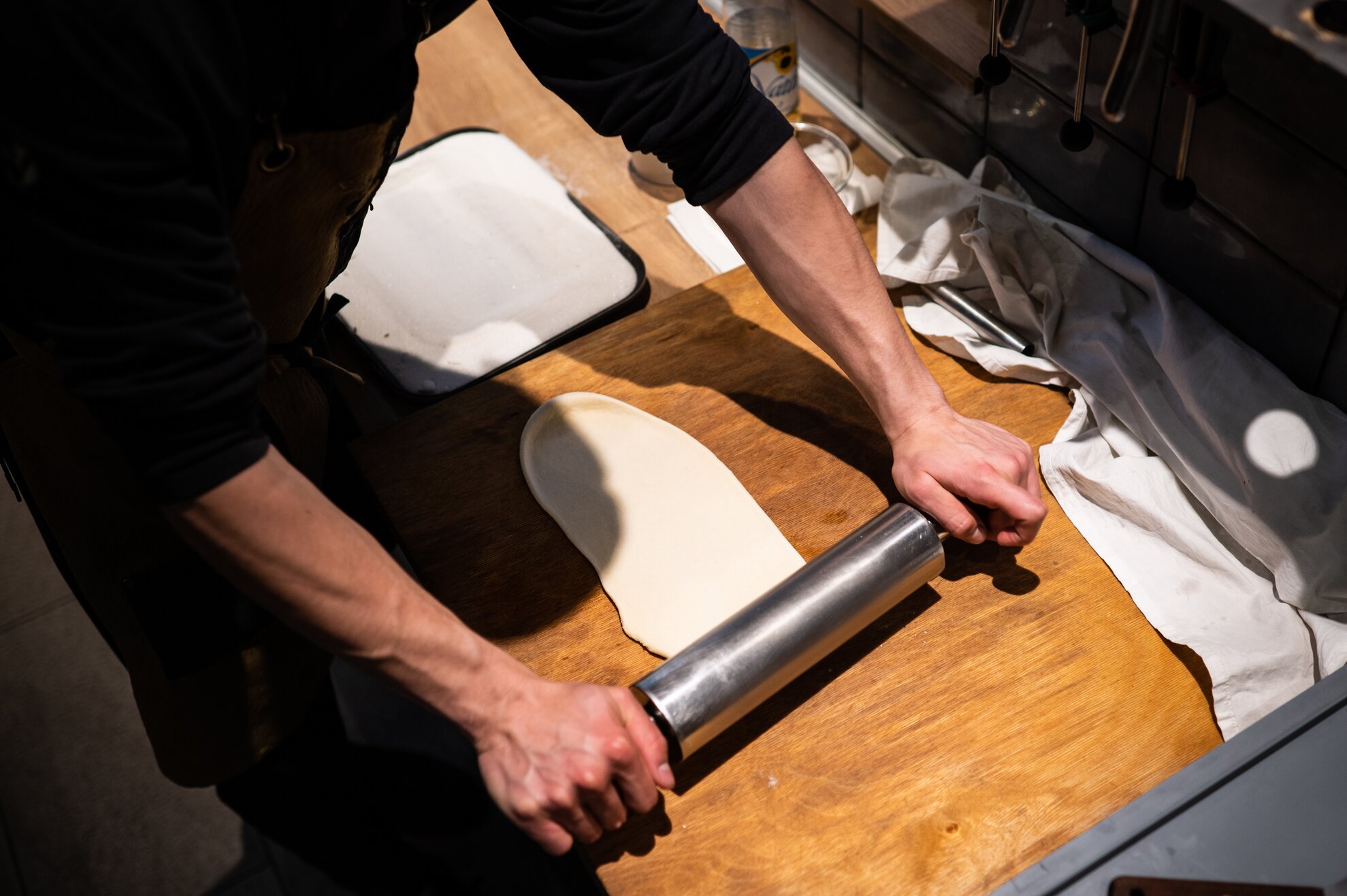
Originally kürtőskalács was made after baking bread so that the charcoal from the burnt wood could still be used. They would pull the still glowing coals out in front of the stove, and the remaining dough would be rolled up on a wooden stick and spun over the coals. At first, it got drizzled with melted butter instead of today's sugar, as the latter was not yet widely distributed in the late 1700s. The first recipe, written down in 1784, has been much refined, but the basic guidelines have not changed.
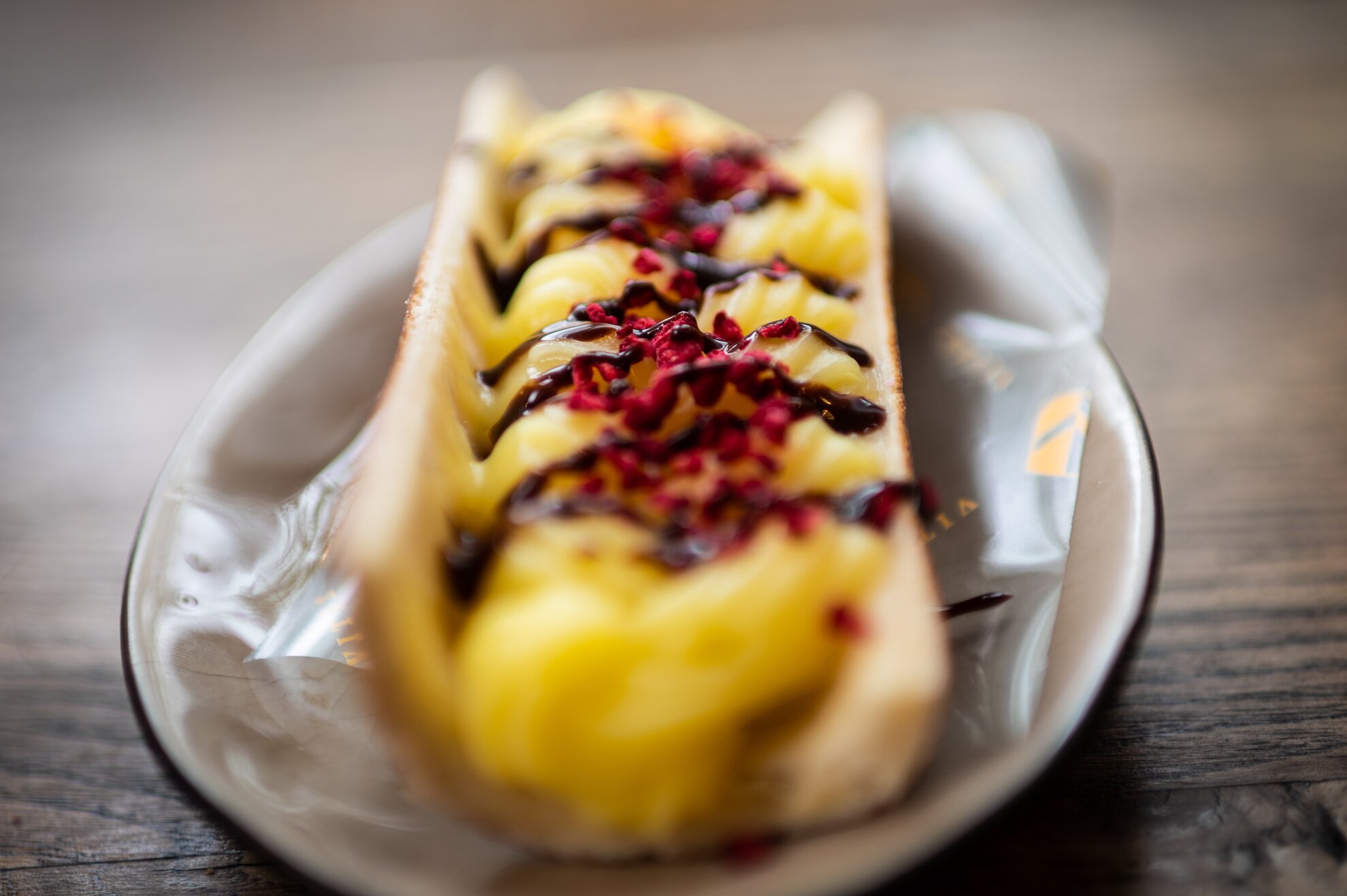
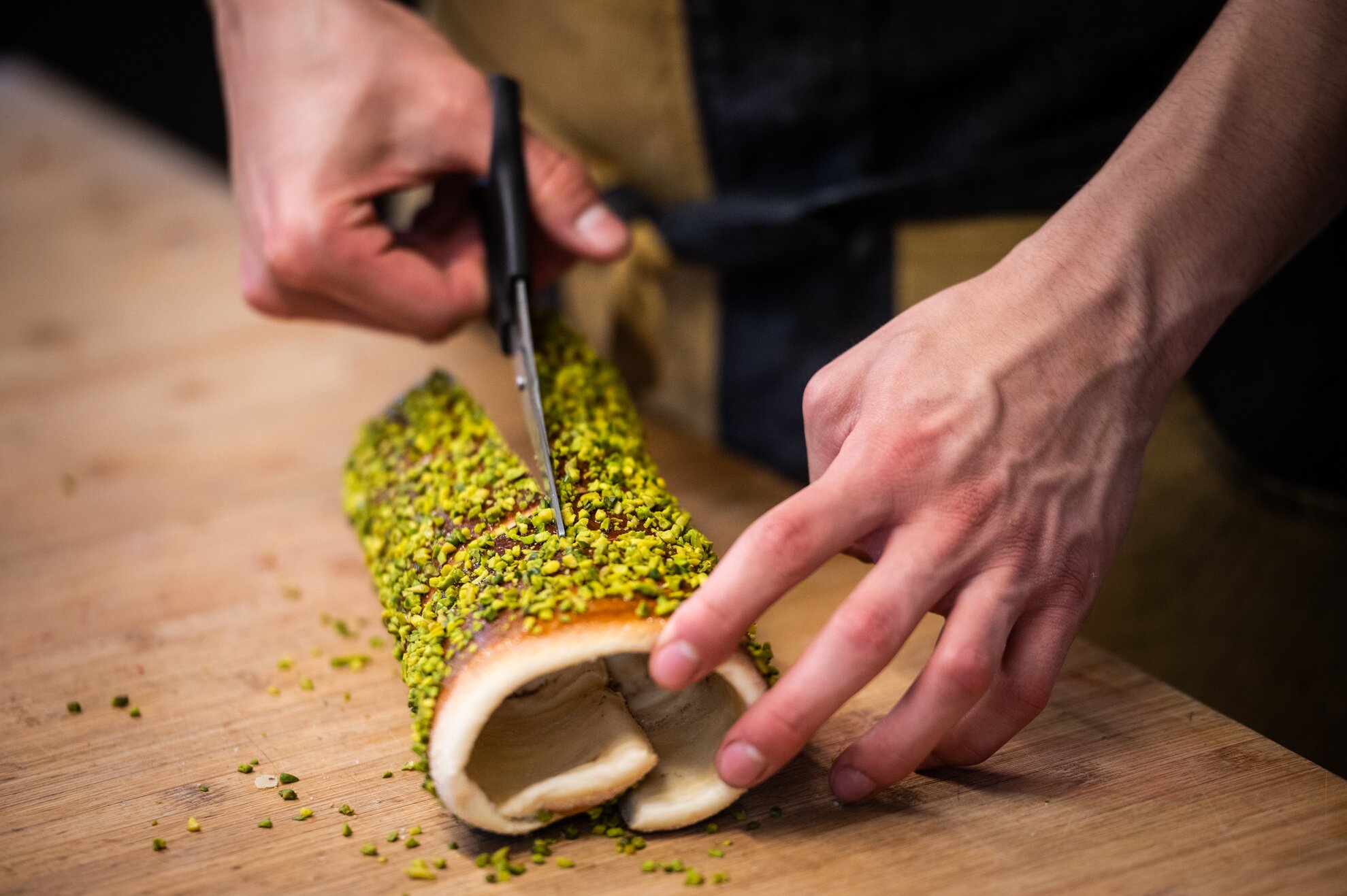
Baked on charcoal
At Édes Mackó, they still work from Grandma’s recipe, making the dough locally, freshly kneaded, and only as much as they bake that day. And speaking of baking, don’t think it is just a matter of putting the baking tray on the coals, turning it occasionally, and being done. Baking on charcoal is one of the most crucial factors, and as Tünde told us, you have to come to grips with the art of charcoal handling. If there is not enough charcoal, the dough will get baked on the inside but stay rock-hard on the outside. And if there is too much charcoal, the sugar will caramelise too quickly, leaving the dough raw. But we all fancy a perfect kürtőskalács that is delicious, soft, and crispy.
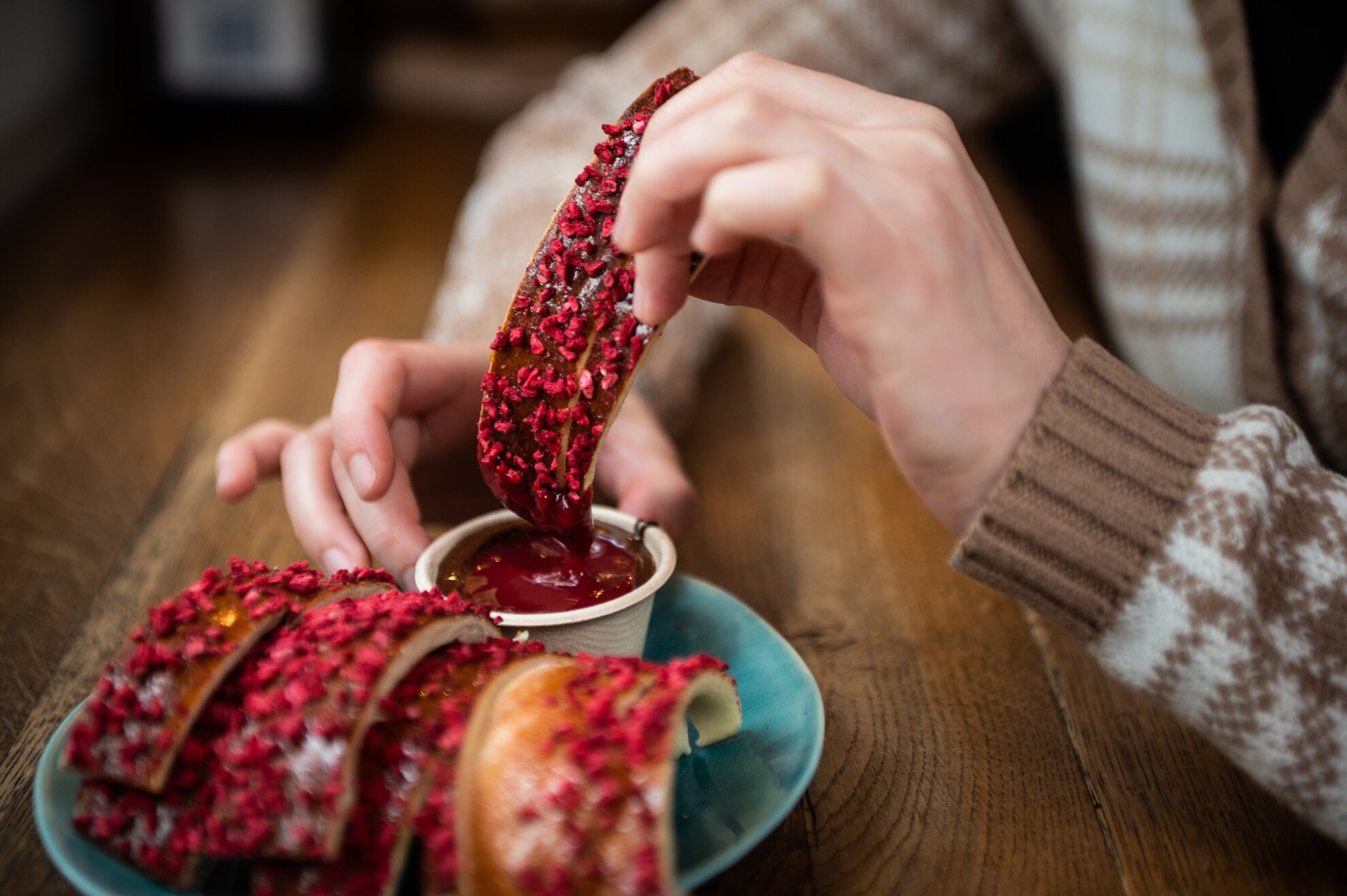
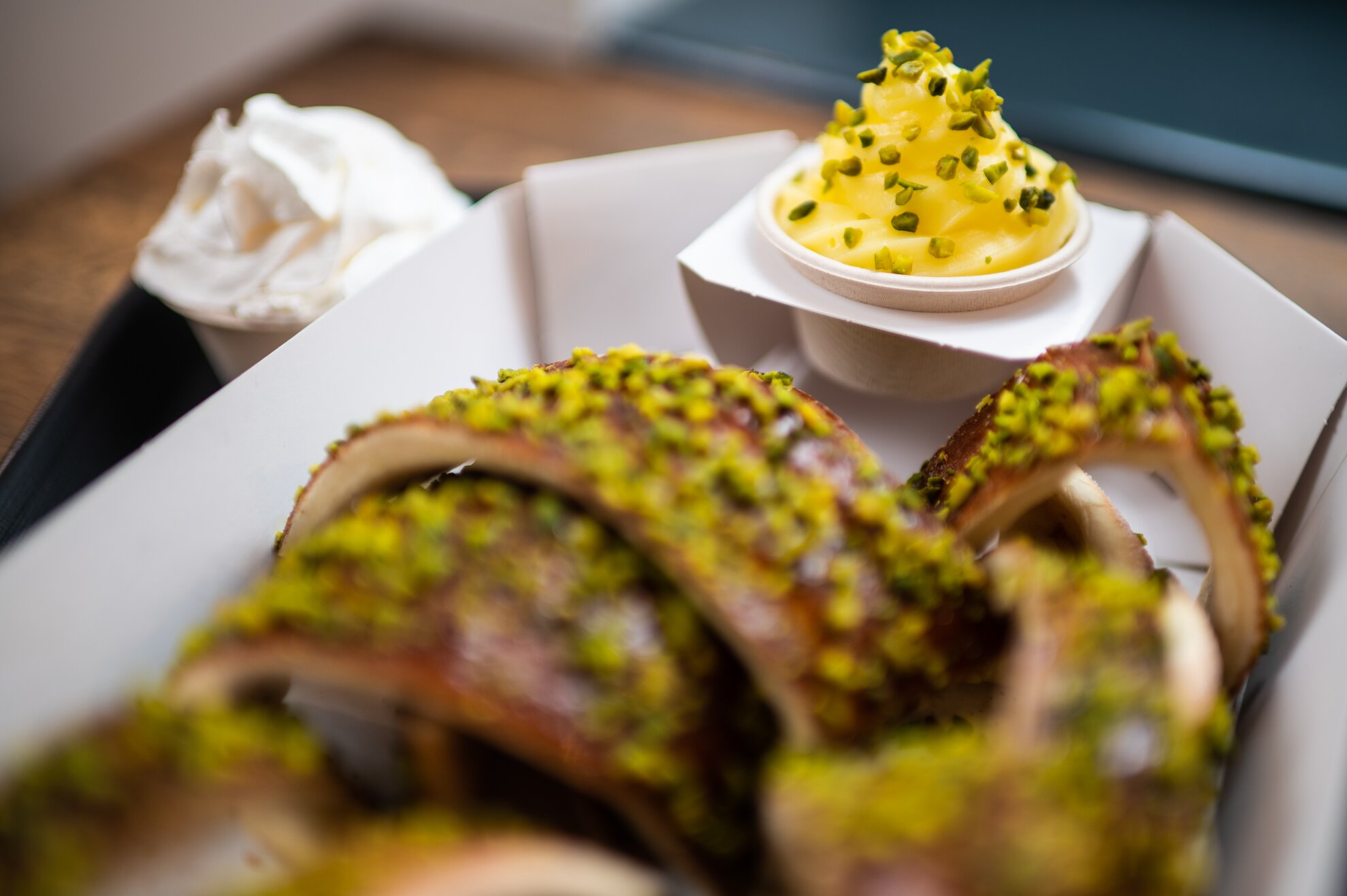
Variations
Once you have the soft and crispy base and have tasted the traditional chimney cakes (HUF 1,800), it’s time for the delicacies! The kürtősbon (HUF 2,400-2,800), for example, is a stuffed version, where the dough is filled with pistachios, chocolate, apricot or plum jam, then baked. Everyone can decide for themselves which flavours they prefer to eat. We tried the pistachio-stuffed and pistachio-sprinkled versions to stay trendy, but next time we’ll go for one with jam!
The kürtősfondü (HUF 2,400-2,800) was our favourite: a raspberry chimney cake is dipped in raspberry-chocolate cream, and appeals to those without a sweet tooth too because of the tart fruit. As you can never have enough kürtőskalács, you can also try desserts like kürtőskrémes (HUF 1,200), poppy seed kürtősguba (HUF 1,400), floating island with kürtőskalács ( HUF 1,400), but here you will also have a kürtőspatkó instead of a biscuit to go with your coffee.

At Édes Mackó, only the imagination is the limit for the creations, but they always make sure to follow the tradition, even if they do add modern flavours. After a stroll at the City Park, a family day at the zoo, or an afternoon at the Széchenyi Baths, there is nothing better than to sit on the patio of the confectionery, have a refreshing lemonade, and indulge in the freshly made, still warm and fragrant chimney cake.
